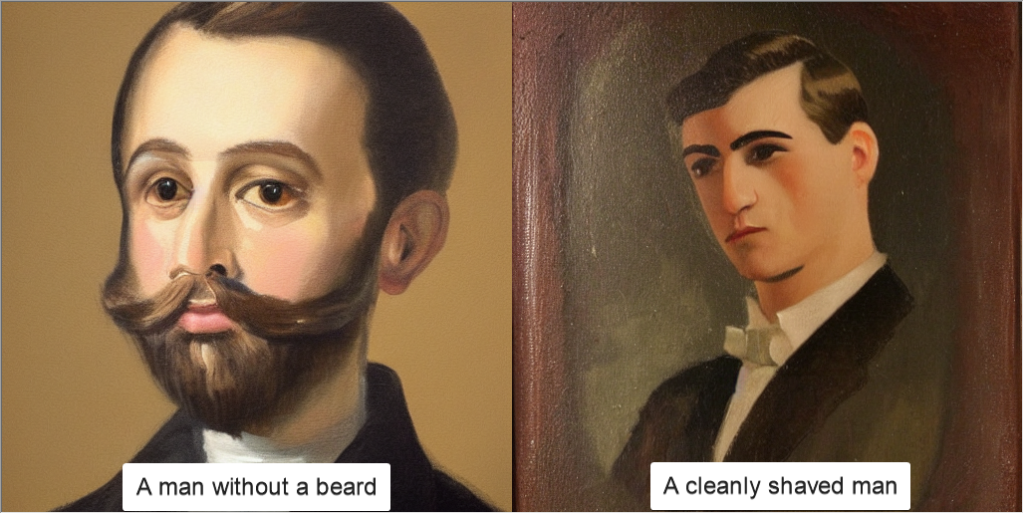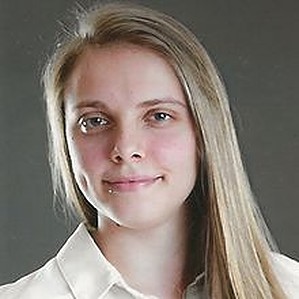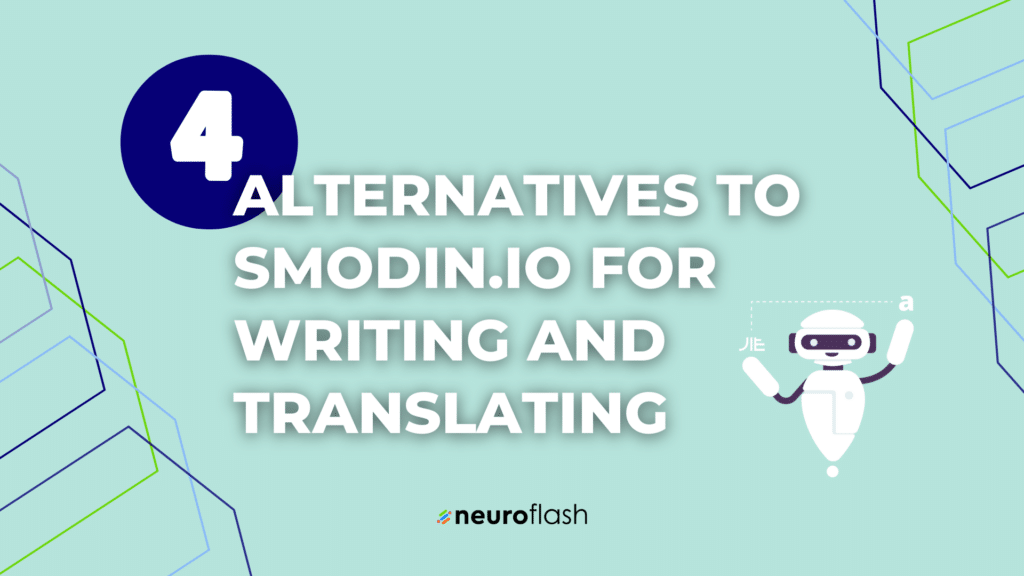Image Generation is the latest technological advancement in the artificial intelligence industry. With it you’ll be able to create original and high-quality images in seconds, and all you need is your imagination and a single sentence. Here and here we have already informed about the technology of text to image generators, but in this article we will show you how to work with it.
How do you write the right text input to create the best AI images?
Generally, a text input for AI Image Generation always has the same structure, In most cases you need three ingredients:
Subject
What do you see?
Details and surroundings
What about it?
Style, Artist, Media Type
What does it look like?
Example:
“A turtle – swimming underwater, – expressionist painting.”

Generate unique AI images with neuroflash
The ability to generate images from text highlights the potential of artificial intelligence as a resource. This is a great progress achieved thanks to modern technology. That’s why neuroflash now combines the No. 1 German-language text generator with a new function, the text to image generation. This makes neuroflash the first company in the DACH region to offer its customers the opportunity to try out AI image generation for themselves completely free of charge. Scroll down to check out some prompt examples and the awesome pictures that neuroflash created from them in comparison to DALLE-2.
How can you make money with neuroflash’s AI-generated images and use them for your business? Very simple:
- Books with little content
- Covers for books, songs, comics, e-books, …
- Illustrations for bedtime stories, books, comics…
- Print-on-demand images or postcards
- Simple stock images for blogs (e.g. food blogs)
- NFTs
- Presentations & Slide Files
- Images for social media posts, newsletters
- Inspirations for landing page designs, product designs
Tip: Combine neuroflash with Photoshop or other programs:
- Use Photoshop and enlarge our images from 72 dpi to 300 dpi with Preserve Details 2.0.
- In the latest version of Photoshop (Beta) there is a function “Photo Recovery” under “Neural Filters”, which usually improve the appearance denr eyes and other strange facial features.
- Then do some basic curve and color corrections and brighten the eyes a bit.
Generate AI images in 3 simple and fast steps
1. develop an idea
Let your creativity run wild and think about what kind of image you want to create. However, be aware of the limitations AI still has in image generation.
2. enter your text prompt
Describe the image you want to create in a short and precise sentence. Be specific and detailed in describing the image and use concrete structure and language as we have shown above. Here you will find a helpful guide on how to elicit the best results from an AI image generator.
3. generate your AI image and download it
Finally, you just need to download the AI-generated images that you like the most. You can save them on your computer and use them as you wish. Maybe you need a unique image for your blog post or an image for your product. It’s entirely up to you how you want to use these images.
FAQ
Here you can find some frequently asked questions about AI-generated images:
1. what are AI-generated images and how are they created?
AI images are images generated using artificial intelligence technology. Basically, the images are created digitally from scratch. All the user has to do is make a text entry describing the desired image. AI algorithms can create original, high-quality images by combining and modifying existing images. Neural networks can be used to create images that mimic the style of a particular artist, or to create images or videos that resemble a particular type of art.
2. are AI-generated images copyright-free?
This question is difficult to answer because copyright law varies from country to country. In general, however, it is safe to say that AI-generated images are not automatically copyrighted. Under U.S. and German copyright law, for example, AI-generated images are technically not subject to copyright protection because they lack human involvement and creativity.
3. what is the basis for AI-generated images?
The artificial intelligence is trained in a neural network before it can successfully convert text input into images. Most companies train machine learning algorithms using real photos that already exist on the Internet.
4. what can I create? What works? Where are the boundaries?
AI-generated images are potentially limitless. You can create all kinds of objects, creatures and living things in different scenes and different styles from photorealistic to paintings. For now, however, the technology still has some limitations:
- The images produced are socially biased and do not always represent the diversity of society in terms of nationality, skin color, sexuality, gender and religion.
- There are difficulties in displaying details in complex scenes.
- Currently, text-to-image generators often fail to produce comprehensible text in the images.
- There are problems in assigning the correct physical attributes to objects in an image.
- Text-to-image generators can only be used with English text prompts and do not work accurately with German descriptions.
- Text-to-image generators are based on a limited database that intentionally excludes certain subject areas like firearms, sexuality, etc., so you can’t generate images in those categories.
- There are problems with generating faces when you create an image that contains multiple people. The faces look distorted and not human.
5. Can I download the AI-generated images in other dimensions?
You can use an online image converter or photo editing software to resize the AI-generated image after you download it.
6. what can AI-generated images be used for?
AI-generated images can be used in a variety of ways. Some possible applications are:
- Generation of realistic images for computer graphics applications
- Artwork creation
- Development of ideas for landing page designs
- Creation of original images for blog posts
- Creation of images for product marketing or advertising
- Creation of training data for machine learning algorithms
7. why does the text input have to be in english?
Currently, AI image technology only understands English text prompts and input. This will most likely change in the future, but until then you can use free online translator tools like DeepL to translate your prompts.
Object of your imagination
When you imagine what you want to see, remember that concrete things are easier for the AI to represent than abstract words. So if you work with concrete words, you can get more predictable images.
Examples of concrete words: microscope, cell phone, tree, camcorder, ketchup, bird, tractor, bicycle, mule, seagull, spaghetti, cage, ball, peacock, pitchfork, tire, tomato, mousetrap, lantern, axe, beetle, sled, board, bagel, cardboard, fire truck, tiramisu, crayfish, eagle, umbrella, cupcake

Concrete words = All pictures show the concrete thing (a microscope).
Abstract words, on the other hand, lead to more diverse results.
Examples of abstract words: hope, progressive, sacred, adequate, sufficient, reality, fidelity, sentiment, intention, sympathy, agnosticism, controllability, determinate, worthy, point of view, imperative, absurd

Abstract words = different things are shown (balloons, face, floating sword?, clouds, etc.).
Write positive prompts – i.e., describe what should be present, not what is missing.
Problem: “A man without a beard” will result in a bearded man because the AI takes things literally. If something is in the prompt, it is more likely to map it. So write “a clean-shaven man” for pictures with predictably clean-shaven men.

Rationale: The AI was trained on images and caption pairs that almost always mention what is in the image, and almost never what is missing.
Details and surroundings
Your subject can be somewhere, doing something or have a special property. Our turtle may be swimming underwater around some colorful coral. So, a turtle swimming underwater near colorful coral, expressionist painting” gives us the following.

But watch out for problems when you start adding sentences and relationships. The text input: “A turtle following a metal anchor to the bottom of the sea, expressionist painting” gives this:

Ouch, this is clearly not what we were looking for. Establishing the right relationships is a major challenge for AI. Because AI doesn’t always “get” how things are connected. You can now either iterate the description, change the order of the words, repeat elements, or add more objects that you would see at the bottom of the sea and on the anchor. Or you can use the style of the image to set the direction.
Style, Artists, Media Types
We can correct the journey of our turtle by adding artist names and style descriptions that can support the theme of the image. Input: “A turtle following a metal anchor to the bottom of the sea, fantasy, painting by Greg Rutkowski and Alphonse Mucha.”

Notice that the text input now includes the genre “fantasy”, the medium “painting”, and the two artist names “greg rutkowski” and “alphonse much”. The resulting image is much closer to our intended image description and looks more refined overall. Why did that work? Perhaps the term “impressionist painting” used earlier referred to artwork and artists who drew turtles doing things other than chasing anchors.
Interestingly, generated images can become really beautiful when you add more information about the resolution and the rating result. For your convenience, here are a number of styles, artists, and mediums you can try to positively impact your results. Thanks to LiviaTheodora for collecting many of these styles in a helpful gdoc here.
- Art styles: Abstract, Abstract Expressionism, Academicism, American Realism, Anime, Art deco, Art Nouveau, Arts and Crafts, Atompunk, Baroque, Bauhaus, Biopunk, Classical Realism, Clockpunk, Conceptual Art, Cubism, Cybernoir, Cyberpunk, Dark Fantasy, Decopunk, Dieselpunk, Digital Art, Expressionism, Fantasy Realism, Flowerpunk, Fine Art, Forestpunk, Futurism, Gothic, Harlem Renaissance, High Fantasy, Impressionism, Installation Art, Manga, Modern Art, Modernism, Neoclassicism, Neo-Impressionism, New Realism, Op Art, Photorealism, Pixel Art, Pop Art, Post-Impressionism, Postmodernism, Precision Art, Realism, Rococo, Romanticism, Socialist Realism, Steampunk, Surrealism, Synthwave
- Painting Types: Acrylic Paint, Airbrush, Canvas, Cave Painting, Chinese Painting, Coffee Paint, Color Field Painting, Dripping Paint, Fine Art, Stained Glass, Gouache, Graffiti, Hard Edge Painting, Hydrodip, Wall Painting, Oil on Canvas, Oil Paint, Painting, Paper Marbling, Puffy Paint, Rock Art, Scroll Painting, Splatter Paint, Spray Paint, Still Life, Street Art, Tempera Paint, Tibetan Painting, Watercolor, Wet Paint
- Print styles: Advertising, aquatint, banner, barcode, block printing, blueprint, brochure, business card, collage, coloring book, comic, cyanotype, election photo, election poster, etching, graphic novel, halftone, illuminated manuscript, illustrated brochure, instruction manual, intaglio, linocut, lithograph, logo, magazine, “Magic the Gathering” card, manuscript, map, mezzotint, monoprint, movie poster, newspaper, newspaper printing, photo collage, photography, stamp, poster, product photo, propaganda poster, QR code, schematic, signage, silver gelatin, sticker, storyboard, storybook illustration, tarot card, ukiyo-e, visual novel, wall sticker, woodblock printing
- Adjectives: strange, ancient, angelic, angry, anxious, athletic, award-winning, simple, beautiful, chaotic, cheerful, clean, cold, colorful, confusing, cozy, creepy, cute, depressing, detailed, dirty, disgusting, dreamy, dry, ecstatic, older, ethereal, evil, excited, expensive, fancy, bold, flat, flat design, flat shading, fluffy, friendly, furry, blurry, gloomy, good, gorgeous, creepy, hairy, happy, very detailed, huge, hyperrealistic, impossible, incoherent, complicated, complicated maximalist, joyful, large, solitary, clear, luminous, massive, massive scale, mature, gentle, micro, mini, minimalist, moody, morbid, speckled, muted, nano, nervous, OCD, old, squiggly, otherworldly, photorealistic, simple, powerful, pretty, priceless, psychedelic, calm, rainy, realistic, refreshing, sad, simple, eerie, sleepy, smooth, ghostly, strong, surface detail
- Lighting: Accent lighting, afternoon, artificial lighting, backlighting, beautiful lighting, blue hour, bright lighting, lit by candlelight, Christmas lighting, cinematic lighting, colored lighting, backlighting, twilight, dark lighting, dawn, daylight, daytime, subdued lighting, dramatic lighting, twilight, evening, film noir lighting, lit by firelight, flickering light, floodlight, fluorescent light, front lighting, global lighting, golden hour, semi-dark lighting, halogen light,
- Time periods: Ancient Egypt, Ancient Greece, Ancient Rome, Antiquity, Assyrian Empire, Aztec, Babylonian Empire, Benin Kingdom, Bronze Age, Byzantine Empire, Carolingian Empire, Dark Ages, Edwardian Age, Elizabethan Age, Georgian Age, Gilded Age, Great Depression, Heian Period, Inca, Industrial Revolution, Iron Age, Maori, Mayan, Middle Ages, Meiji Period, Mid-Century, Middle Ages, Ming Dynasty, Minoan, Modern, Moorish, Mughal Era, Nasrid, Navajo, Neolithic, Olmec, Ottoman Empire, Paleolithic, Persian Empire, Pre-Columbian, Prehistoric, Qing Dynasty, Regency, Renaissance, Retro, Shang Dynasty, Songhai, Stone Age, Sumerian, Tokugawa Shogunate, Tudor, Victorian, Viking, World War I, World War II, Zhou Dynasty, Zuni Pueblo, 1100s, etc.
- Decorative art: 3D printing, amigurumi, applique, balloon modeling, balloon turning, bas-relief, bead embroidery, blown glass, bone china, carved, carved ivory, carved lacquer, carving, kneading, cloisonne, crochet, Cross stitch, Diorama, Embroidery, Enameling, Felting, Fretwork, Glass mosaic, Ice carving, Impressionist mosaic, Marquetry, Inlay, Puzzle, Crochet, Lacquer, Lampwork, Lath art, Leather carving, Leather work, Marble, marquetry, micromosaic, miniature painting, modular origami, mosaic, needlework, origami, paper model, paper cut, papier mache, photographic mosaic, pietra dura, porcelain, pottery, doll, puzzle, pysanky, Quiltwork, Quilting, Relief Carving, Repousse, Origami, Sand Art, Scrimshaw, Sculpture, Stained Glass, Statue, String Art, Tapestry, Tattoo, Tattoo Art, Venetian Glass, Weaving, Wet Folding, Carving, Wood Burning
- Rendering techniques: 3D Model, 3ds Max, 500px, Arnold Render, ArtStation, Blender Render, CGsociety, Cinema4D Render, CryEngine, Cycles Render, Daz 3D, DeviantArt, DirectX Render, Doughy Render, Houdini Render, Infini-D Render, KitBash3D, Luxcore Render, Marvelous Designer, MentalRay Render, OctaneRender, Optix Render, Photobashed, Photoshop, physically based renders, Pixia, Quixel Megascans, Raylectron Render, Redshift Render, Sketchfab, Substance 3D, Terragen, Unreal Engine, Vray Render, Weta Digital, Zbrush Render
- Photography Styles: Daguerreotype, Tintype, Film Negative, Tri-X, Kodachrome, Slide Film, Portra 800, Natura 1600, Ilford Delta 3200, Polaroid, Hasselblad, Double Exposure, Multiple Exposure, Large Format Camera, Wide Angle Lens, Fisheye Lens, Tilt Shift Lens, Anamorphic, Lensbaby, Telephoto, Prime Lens, f1.8, f2.8, f4, f11, f16, photo shooting, commercial, thermography, x-ray, infrared
- Artists: William Logsdail, Beatrix Potter, Roy Lichtenstein, Richard Corben, Michaelangelo, Gerhard Richter, Bjarke Ingels, John Berkey, George Inness, Peter Andrew Jones, J.M.W.. Turner, Todd McFarlane, Caravaggio, Atey Ghailan, Hirohiko Araki, Huang Guangjian, Ray Caesar, Takeshi Obata, Antoine Blanchard, Diego Velázquez, Romero Britto, Guido Borelli da Caluso, Lucas Cranach the Elder, Nele Zirnite, Bob Ross, Zdzislaw Beksinski, Glen Fabry, Jane Graverol, Krenz Cushart
- Colors: black, silver, gray, white, maroon, red, purple, fuchsia, green, lime, olive, yellow, navy blue, blue, aquamarine, aquamarine
- Common expressions that can increase results: Masterpiece, trend on artstation, trend on pixiv, vivid, dynamic, geometric, intricate, high quality, detailed.
15 AI image generation text input examples OpenAI vs neuroflash
The goddess of chaos intricate elegant, highly detailed, digital painting, artstation, concept art, smooth, sharp focus, illustration, art by artgerm and greg rutkowski and alphonse mucha, heavily influenced by frank frazetta and boris vallejo


Realistic portrait of a woman with thin gold roses, intricate, elegant, highly detailed, wonderful eyes, sweet, digital painting, artstation, concept art, smooth, sharp focus, illustration, art by artgerm and greg rutkowski and alphonse mucha and williamadolphe bouguereau


Dwarf sniper, detailed lighting, high quality, sharp focus, intricate, digital art, artstation


magnificent baroque city floating in air, beautiful, surreal, highly detailed, sharp focus, sunset, by artgerm, cgsociety


beautiful ocean, pirate ship, natural lighting, mm photography, highly detailed, K, artgerm, sharp focus, cgsociety, cool lighting


beautiful anime girl, hourglass slim figure, techwear hakama, black hair, body portrait, slight smile, highly detailed, digital painting, artstation, concept art, sharp focus, illustration, art by wlop and greg rutkowski and alphonse mucha and artgerm


hyperrealistic dslr film still of an actor with a mustache, stunning octane comprehensive render, inspired by istvan sandorfigreg rutkowskiunreal engine, perfect symmetry, dim volumetric cinematic lighting, extremely hyperdetailed, incredibly real lifelike attributes flesh texture, intricate, masterpiece, artstation, stunning


portrait of rugged male ranger dd muscular fantasy intricate elegant headshot portrait detailed face coherent face highly detailed digital painting artstation concept art smooth sharp focus illustration art by artgerm and greg rutkowski and alphonse mucha


oil painting close up portrait of a contemplative young norwegian woman with very long dark flowing hair in a dress made of white roses at sunset, hazy, digital art, chiaroscuro, artstation, cinematic, golden hour, digital art painting by greg rutkowski, williamadolphe bouguereau, hazy atmosphere, cinematic lighting


evil ai, neuromancer, painted by stanley lau, painted by greg rutkowski, painted by stanley artgerm, digital art, trending on artstation


a curious phoenix watching a wizard study magic in a mages workshop, soft lighting, mythical phoenix, digital art trending on artstation


concept art of a jungle path leading to tree of life, religious, in the style of fenghua zhong and ruan jia and jeremy lipking and peter mohrbacher, mystical colors, rim light, beautiful lighting,k, stunning scene, raytracing, octane, trending on artstation


a stunning and noble highly detailed romantic period style portrait of mansa musa by charles sillem lidderdale, trending on artstation, oil painting masterpiece, symmetry, mysterious, very very aesthetic, african iconography


a drawing of a house with a lot of windows, concept art by toriyama sekien, pixiv, maximalism, concept art, official art, maximalist


epic professional digital art of a big monster, best on artstation, cgsociety, wlop, Behance, pixiv, astonishing, impressive, outstanding, epic, cinematic, stunning, gorgeous, much detail, much wow, masterpiece


Credit for the prompts goes to users from https://lexica.art/.
Conclusion
If you’re looking for a way to create stunning images with AI, this I hope this tutorial on AI image prompt examples helped to give you some guidance and ideas. When using AI text to image generation, the text input is the most important aspect in generating beautiful images for any purpose. Once you are able to formulate precisely to the AI what you want to create, you’ll be able to generate images that are truly unique and breathtaking.
If you want to try out high quality AI image generation without being on a long waiting list or paying for access, be sure to try out the neuroflash AI image generator for free! All you have to do is create a neuroflash account and then get started.



















